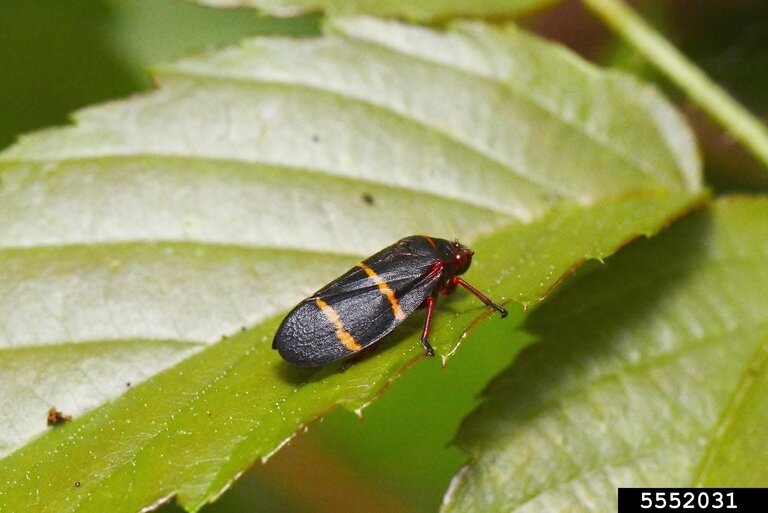Little gobs of foamy stuff have appeared on the stems of various plants in the Mary Snoddy garden. Spittlebugs (or “Froghoppers”) feed by piercing stems and sucking the juices from ornamentals and grasses. The different members of this family exhibit particular food preferences. The Pine Spittlebug, for instance, feeds on members of the Pine (Pinus) family. The two-lined Spittlebug is the one inhabiting salvias and coneflowers in my garden.
Spittlebugs start life as eggs, usually found in tiny orange-ish clusters. The eggs lay dormant during winter. When they hatch in spring, nymphs find a host plant, start eating, and produce “spit.” If you are inquisitive enough to handle this blob of foam, you will find a small, greenish insect at its center. The Spittlebug exudes foam to protect itself from drying out or being eaten as it goes through five molts, growing larger and more defined at each iteration. The nymph stage lasts 34 to 60 days. Adults live up to 42 days. The adult two-lined Spittlebug is rather attractive with its Halloween coloration, black with two orange lines and red eyes. A sharp-eyed observer will see a flash of red when the wings are extended in flight.
Unless the insects are present in large numbers, you can ignore them. The occasional bug doesn’t harm the plant. If you find them too disgusting to tolerate, try washing them away with a strong spray from the garden hose. Infestations can cause damage on centipede grass, especially vulnerable when it is choked with thatch. You should only consider chemical treatments in case of a large infestation. Consult your local Extension office for insecticide recommendations.
This foamy blob conceals and protects a Spittlebug, also known as a Froghopper.
Inside the spittle is the nymph. This one is nearing maturity, probably in its fourth molt.
This photo of an adult Two-Lined Spittle Bug was taken by Royal Tyler, Pro Pest and Lawn Store, Bugwood.org.


